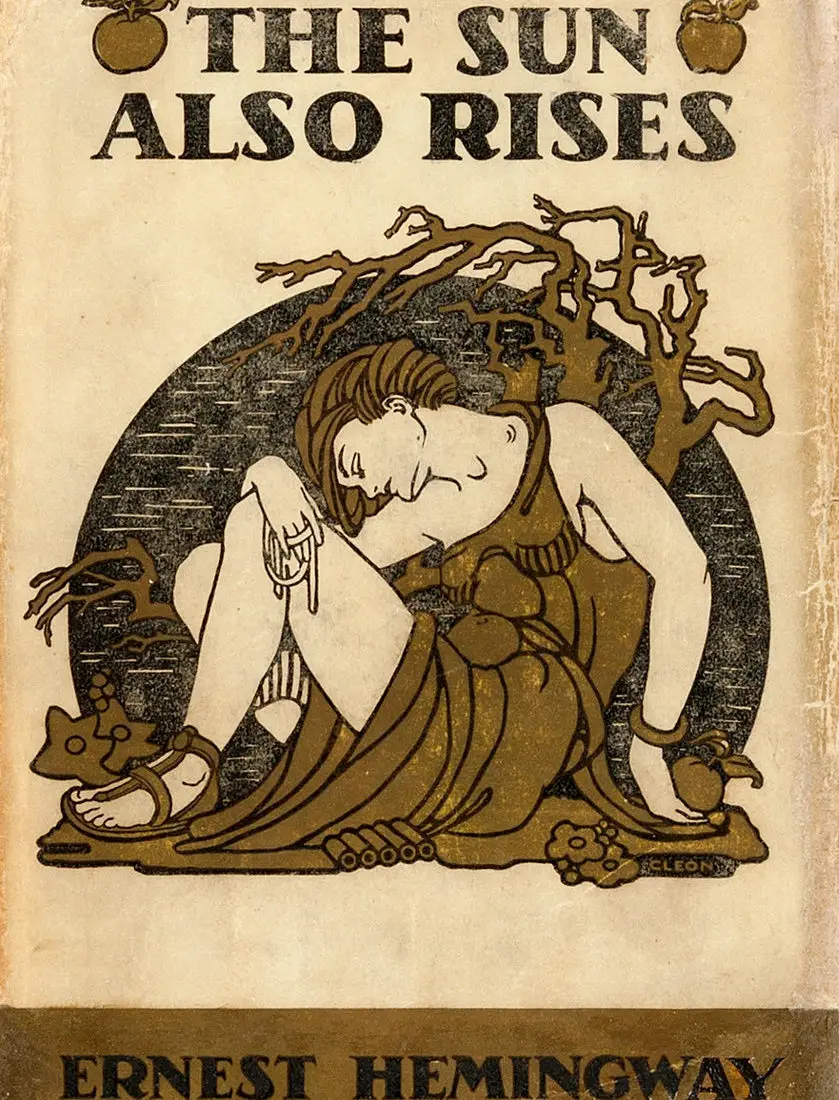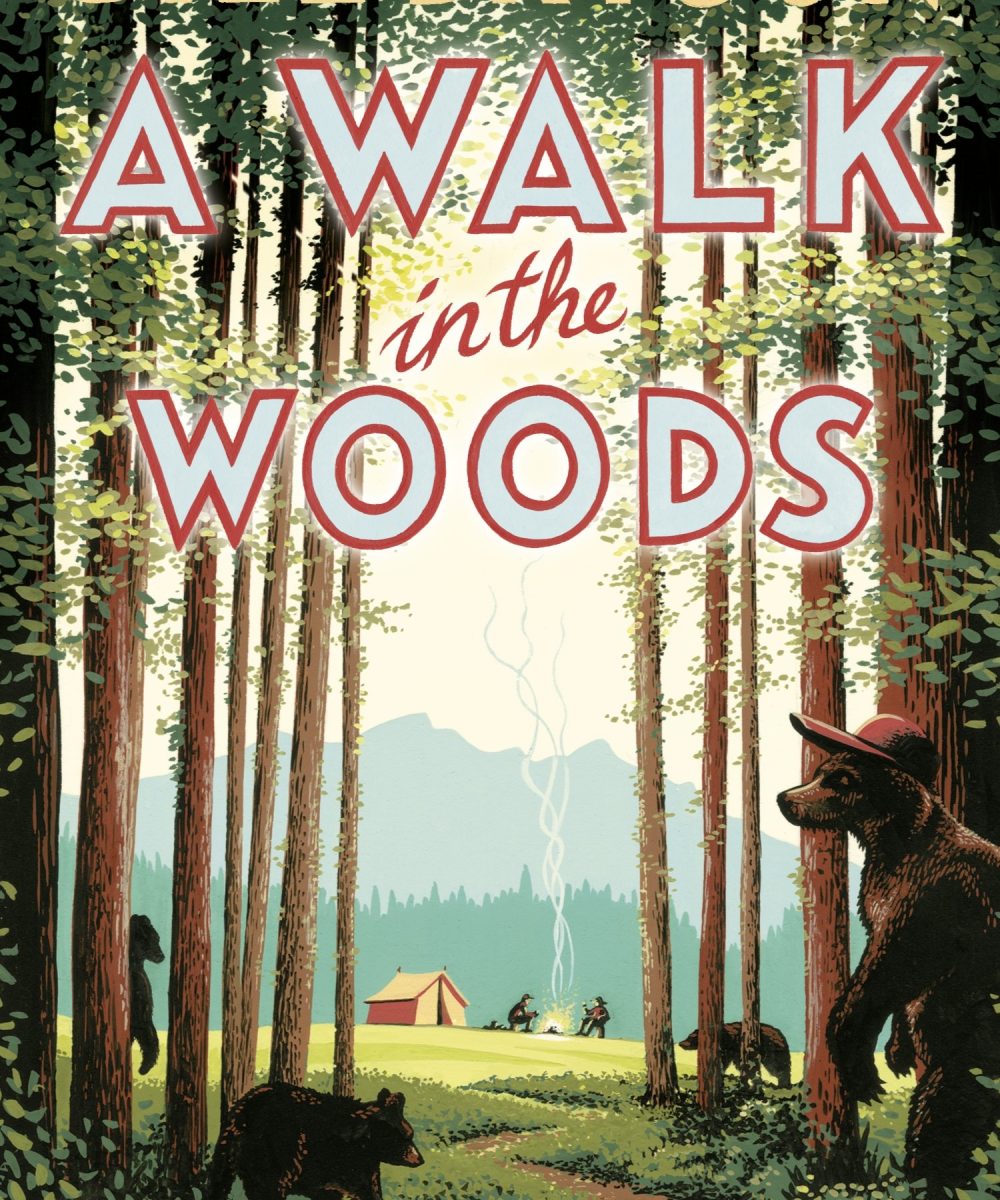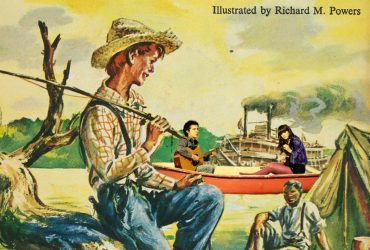Travelogues & Adventure Travel Books to Keep The Mind Dreaming
Appalachian Trail: A Walk in the Woods [Including Book Review]
The Appalachian Trail, or AT, is a 2,200-mile thru-hike along the East Coast of the USA. Covering 14 states and taking anywhere between four and six months for the average hiker to complete, the trail is hardly a walk in the woods. (Despite the popular Bill Bryson memoir of the same name – A Walk in the Woods .)
From hiking the Appalachian Trail to a Walk in the Woods
You may wonder how the routine of daily hiking and camping through the ‘green tunnel’ might turn into a 300+ page book. Of the tens of days spent on trail most follow a simple pattern. Walk. Eat. Sleep. Followed by trail, trees, wooded summits and yet more trail. For days and days, this monotonous routine doesn’t relent. Not until the terrain changes – some river crossings, scrambles, steep ascents or descents. Then there are the regular resupplies and hitches into town for food, shower or kit replacement. The trail is relentless. Just after completing the trail, my fiancé described his greatest learning from six months away as ‘how to be uncomfortable’.
He’s spot on – the daily routine isn’t just monotonous, it’s downright uncomfortable. Covering these distances for days on end, and carrying heavy packs causes continual aches and pains. There’s a constant need to maintain your body and the kit that’s keeping you going. Food becomes fuel – something to replenish and increasingly less a source of satisfaction. Then there’s water. While water is mostly widely available on the trail, it does need some thought. Every drop has to be carried and filtered. Every opportunity for water needs to be assessed. Do I need to stock up now or can I wait and save myself the weight? Where’s the next water source if not here?
While Bryson doesn’t complete the whole Appalachian Trail (who can blame him, he’s a writer on assignment, not a thru-hiking machine) the book explores the history and a flavour of the AT along with Bryson’s signature humorous storytelling.
Thru-hikers who complete the Appalachian Trail – not just any old walk in the woods
Let’s take a moment to talk about AT completion rates. It’s estimated that three thousand set off each year in the hope to complete the whole thing. Yet only 1 in 4 make it to the end.
Many reasons bring hikers off trail – some of the obvious include injury or family emergencies. Others fall foul of lack of time or finances. Sometimes they underestimate what’s required or get hit hard by something out of the blue. Some find the trail physically and mentally exhausting, hitting a wall they can’t or don’t want to push through.
To complete the AT, you have to want it more than almost anything. Hikes like these are a test of willpower. You have to fight that mental fatigue and keep going. Even when the challenge seems so vast, the terrain so difficult and the way forward full of more discomfort.
Hikers talk about ‘hiking your own hike’. This is a reminder that no matter who you meet on the trail, or what obstacles get thrown your way, sometimes you have to prioritise your own needs. You shouldn’t slow down or speed up to keep up with others. You shouldn’t miss out on side trails or your own goals to stay with the pack. This is your experience and you’re the only one who’s going to get you to the end. So pay attention to your own needs.
Those hikers who complete the whole thing become one of the legendary 2,000-milers. For their troubles, they receive a certificate, a patch and their name published in the AT listings .
Thru-hikers, section-hikers, trail names – Appalachian Trail terminology
Hiking the AT comes with its own rule book and that includes a certain lingo spoken by those in its inner folds. There’s a whole world of hiking gear (don’t get a thru-hiker started on that one) then trail names, tramily’s and different hiking styles.
Three hiking styles:
- Thru-hikers walk the entire trail in one go. In the case of the AT this means from Georgia to Maine. All 2,194.3 miles.
- Section-hikers walk pieces of the trail over several weeks, years or even decades.
- Flip-floppers hike the whole trail but not in a straight line. They hop around the trail to avoid the crowds, weather or other practical reasons. They might start in the middle and hike north. Then travel back to the middle and hike south. Or start in the middle and go north, then back to the middle to hike south. They flip-flop back and forth.
Hikers also take on ‘trail names’. These nicknames are individual, usually describe something about the person and can be quite comical. Examples include ‘Not yet’, ‘Powers’, ‘Split’, and ‘Little Spoon’. They’ll likely have a story behind the name. That way it’s so much more memorable than meeting your third Ben or Andy on the trail.
Some hikers group together and form a ‘tramily’ – think trail family. This group of hikers bond over their shared experiences (and probably their discomfort too). They look out for each other like a family. Not all hikers are part of tramily’s – some like the total freedom of hiking alone. Others swoop in and out, part of a group for a time before doing their own thing – hiking their own hike.
A Walk in the Woods by Bill Bryson [Book Review]
For Bill Bryson, he hiked much of his 800 miles of the trail with his old friend Katz as he was desperate not to go alone. Neither were prepared for a hike like the Appalachian Trail and quickly decided to skip out chunks in search of easier ground. Bryson accepted that, “One thing was obvious. We were never going to walk to Maine.”
Despite not completing the trail, A Walk in the Woods is often described as one of Bryson’s funniest books. Some have said it’s one of the funniest travel books ever written. Having read it years ago, my Mum recalls almost nothing about the book except that it’s about the Appalachian Trail and it left her laughing out loud.
While I enjoyed reading the book I didn’t find it laugh-out-loud kind of funny. Don’t get me wrong, I had a few chuckles. Perhaps I’d been expecting something different – a bit more preparedness for the trail. Or the story of a clueless hiker to a seasoned thru-hiker with a humorous undertone. A story of the journey from inexperience to hiking prowess.
Instead, Bryson’s recount tackles the constant hardship of the trail, and the day-to-day challenges facing both him and Katz while intermingled with the AT’s history and America’s impact on the natural world. He describes the serious underfunding, mismanagement and overdevelopment of America’s natural land. As someone who always loves a little factual content in a travelogue, this suited me well and made up for it not quite being the journey I expected.
My feelings about the book are likely also clouded by the fact I started reading it in the days following my fiancé’s departure to hike the AT himself. Luckily, Charles was much more prepared and has long been competent out in the wild.
Travelogues & Adventure Travel Books to Keep The Mind Dreaming

There’s no other place to start this travel book list than with this modern epic by Jack Kerouac – an autobiographical novel and work of the post WWII Beat Generation. Follow Kerouac’s road trips through the USA from New York, Denver, San Francisco and LA and everything that goes along with, as his characters live life against a backdrop of jazz, poetry and drugs.
“Going to another country doesn’t make any difference. I’ve tried all that. You can’t get away from yourself by moving from one place to another. There’s nothing to that.”
Hemingway is revered as one of the iconic writers of American fiction. An exhaustive traveller himself, his trail leads from his birth place in Illinois, USA through Northern Italy, Toronto, Paris, to Smyrna in Turkey and Pamplona in Spain, back to Paris then Key West and Wyoming, before journeying to East Africa, the Bahamas, Barcelona, Havana, London, Normandy, Luxembourg, Venica and Idaho, where he ended his life. Along his exhaustive travels he wrote, and is considered (at least to me) one of the best travel writers of time. Take any one of his books for moving and beautiful accounts of experiences around the globe. One of Hemingway’s most famous works, For Whom the Bell Tolls (1940), was inspired by his time as a journalist covering the tumultuous Spanish Civil War for the North America Newspaper Alliance. But here listed is a novel of the Lost Generation, based on Hemingway’s 1925 trip to Spain from Paris, portraying American and British expatriates heading for the Festival of San Fermín in Pamplona to watch the running of the bulls and the bullfights.


“The particulars of new places grabbed me and held me, the sweep of new coasts, cold, lovely, dawns. The world was incomprehensibly large, and there was still so much to see. Yes, I got sick sometimes of being an expatriate, always ignorant, on the outside of things, but I didn’t feel ready for domestic life, for seeing the same people, the same places, thinking more or less the same thoughts, each day. I liked surrendering to the onrush, the uncertainty, the serendipity of the road.”
Simply a masterpiece: A travel and surfing memoir, and an essential read for both surfers and non surfers alike. Finnegan has chased waves through South Pacific, Australia, Asia, Africa and this is a beautiful self-portrait of a travelled, hard-core surfer exploring the true depth of the sport in its culture and codes, its mechanics, as an obsession, an addiction, a life’s commitment, a way of life.
“Distance changes utterly when you take the world on foot. A mile becomes a long way, two miles literally considerable, ten miles whopping, fifty miles at the very limits of conception. The world, you realize, is enormous in a way that only you and a small community of fellow hikers know.”
A hilarious travelogue about Bryson’s adventures hiking the Appalachian Trail. The account of his walking the venerable and infamously difficult “AT” in the eastern USA is a wry account of the many pitfalls he encounters and errors in judgment he makes along every step of the day. Shockingly funny, it also includes some mind-blowing facts and figures about the trail and its history, as well as the areas surrounding. It’s a travel book for hikers and non-hikers, with characters that will stick fondly with you for the rest of time.
“Travel is fatal to prejudice, bigotry, and narrow-mindedness, and many of our people need it sorely on these accounts. Broad, wholesome, charitable views of men and things cannot be acquired by vegetating in one little corner of the earth all one’s lifetime.”
An adventure-filled classic, one that defines American Literature, about two American exiles – an orphan and a runaway slave – floating more than 500 miles down the great Mississippi on an even bigger journey. America 1870’s with everything within: a background civil war, deadly family feuds, the conflict between civilization and “natural life”, which Huck embodies with his free spirit and uncivilised ways, and resistance to rule and discipline.


“Difficulties are just things to overcome, after all.”
“If I had not some strength of will I would make a first class drunkard.”
“We had seen God in His splendors, heard the text that Nature renders. We had reached the naked soul of man.”
“Superhuman effort isn’t worth a damn unless it achieves results.”
Sir Ernest Shackleton, C.V.O. (1874-1922) is regarded as perhaps the greatest Antarctic explorer and one of England’s heroes. He was a member of Captain Scott’s 1901-1903 expedition to the South Pole, then in 1907 led his own expedition on the whaler Nimrod, of which the events are chronicled in his first book, The Heart of the Antarctic. He is considered one of England’s greatest heroes for his actions during the ill-fated expedition outlined in his second book and expedition to “the White Warfare of the South”. It is a tale of high adventure, strenuous days, lonely nights, unique experiences, and above all, records of unflinching determination, supreme loyalty and generous self-sacrifice on the part the men.
“Don’t settle down and sit in one place. Move around, be nomadic, make each day a new horizon … it would be a shame if you did not take the opportunity to revolutionize your life and move into an entirely new realm of experience.”
A chilling and tragic read of a young man’s search for knowledge and experience. He leaves behind his old life, his supportive family, giving all his savings to charity, burning the cash in his wallet and gives himself a new name. Four months later, putting himself up against the Alaskan wild, hunters find his decomposed body, but it is how protagonist McCandless comes to die that is the indelible story of ‘Into the Wild’.
Author

Skiing, surfing, mountain biking, kitesurfing – Katie is motivated by anything that involves a kick of adrenalin. Sports journalist-cum-travel writer is the day job. But when she’s not chasing adventure, exploring the far reaches of the world for a story, you’ll find her in East London enjoying – in her words – one of the best food and drink scenes out there. A travelogue and Manhattan in hand at her favourite pub or dancing the night away to loud, loud music just about rivals a fresh powder day or sunrise surf.
TAKE A WALK IN THE WOODS

brotherstories: “This moment looks like one I’ve experienced many times- with dear friends and early mornings. Bonfires and honest talk. Mountain sunsets and guitar singalongs. My soul is itching for more of these moments.”
![Keep Venturing Out [want to make a wall sign that says that] Фотографии Города](https://i.pinimg.com/236x/dc/50/59/dc5059263e32c71e95e9fc692e09e290--adventure-travel-adventure-awaits.jpg)


Badlands National Park is one of the most beautiful places in South Dakota, and should be on everybody’s bucket lists! Planning an itinerary for your family vacation can be a challenge though, that’s why I’m sharing this list of 8 things to do in Badlands. Whether you are hiking with kids, camping with families, or are on a solo photography adventure, this travel guide will help you find fun hikes and have the best road trip ever! #8 was so cool! #badlandsnationalpark#travel#southdakota#america
Source https://www.sageadventures.co.uk/appalachian-trail-walk-in-the-woods/
Source https://www.thebespokeblackbook.com/travelogues-adventure-travel-books-to-keep-the-mind-dreaming/
Source https://www.pinterest.co.uk/sonniesoutside/take-a-walk-in-the-woods/